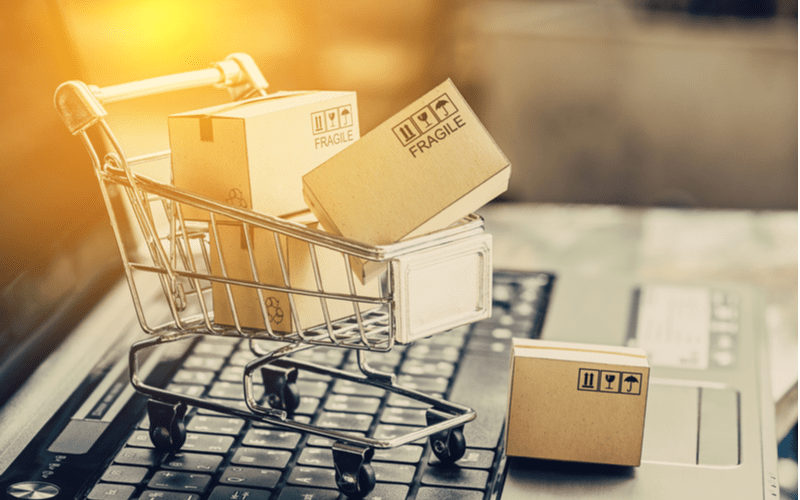3PL Industry Trends: Intelligent Order Management and Unified Logistics
This blog is co-authored by Raj Patel, Senior Director Global Industry Strategy 3PL; Terence Leung, Senior Product Marketing Director; and Nina Seth, Product Marketing Director
Almost a year and a half into the COVID-19 pandemic,e-commerce continues to boom, according to the2021 State of Supply Chain Execution Report.What the pandemic has done to accelerate new consumer buying behaviors is also changing the ways consumers order delivery and pickup items. This creates many challenges for retailers and manufacturers who either fulfill orders themselves or contract with third-party logistics (3PLs) partners to perform these services.
Traditionally, retailers have been good at forecasting demand and placing items in the distribution network based on where these consumers are most likely going to buy from. This helps put the product closer to the consumer so that they can get same-day or next-day delivery. The challenge is that the window for this process is getting smaller, from weekly to daily or even hourly.
With increasing focus on consumer-centricity and trends like direct-to-consumer (D2C), retailers and manufacturers are looking for ways to deal with additional complexity, order volume, consumer expectation, and the cost of doing business. Retailers and manufacturers now expect their 3PL partners to deliver better, faster and cheaper services while providing additional value-added services. Previously, 3PL companies were responsible for storing and moving items. Now, these organizations expect 3PLs to manage inventory and help optimize fulfillment.
Competitive Edge
Imagine that you are a retailer or a manufacturer that is faced with a sudden surge in e-commerce demand. You did not plan to handle this amount of e-commerce volumes, you do not have experience in picking and small parcel shipping, and your consumer want same-day and next-day delivery. While you don’t have these capabilities, you do want to do this profitably. Would it be beneficial to partner with a 3PL that can do this for you much faster than your internal teams? Because 3PLs can help you optimally and dynamically position your inventory, profitably source orders, efficiently pick/pack/ship, and perform final deliveries across modes, they are the obvious choice.
If you are a 3PL, Blue Yonder can enable you to perform these tasks for your retail/manufacturing customer while helping you gain a competitive edge to take advantage of the opportunities presented by the e-commerce boom.
Let’s dive into the manufacturer example. If a manufacturer wants to produce and sell 1,000 units of a product through their e-commerce channel, based on planning and forecasting processes, they can now hand this over to the 3PL partners. Leveraging Blue Yonder’s e-commerce capabilities, the 3PL can determine where the 1,000 units need to be placed across the distribution centers (DC) and network.
The 3PL partner can let the manufacturer know that 500 units are needed at the West Coast DC, 150 units are needed in the Northeast, 250 units in the Midwest, and the remainder for the Southeast. The 3PL can also help coordinate and facilitate the movement of products to DCs and handle pick/pack/ship operations to fulfill consumer orders. The 3PLs order management system (OMS) can:
- Integrate with the manufacturer’s e-commerce website to provide network-wide inventory ATP,
- Provide estimated delivery dates for consumers, and
- Optimally fulfill orders.
This can help lower costs to fulfill, increase customer satisfaction, and improve profitability.
Evolving Trends
The above scenario enables manufacturers and retailers to focus on their core competency of R&D, new product introductions, marketing, and customer service, while their 3PL partners will serve as their Supply Chain as a Service (SCaaS).
In this paradigm, the 3PL partner can use Blue Yonder’s e-commerce microservices to allocate the right product through the right channel. They can also leverage other state-of-the-art solutions included in the unified logistics and execution offering:
- Warehouse Management to perform pick/pack/ship operations.
- Transportation Management to handle the optimization of various modes of inbound and outbound deliveries and systems.
- Luminate Control Tower for execution visibility.
This way, the retailer and its 3PL partner have knowledge in real-time where inventory is located, where is it allocated, and how it is getting to the end consumer.
Start Your Digital Journey
Consumer expectations are changing how retailers and manufacturers highlight their products to consumers, position products across the network, and lastly fulfill and deliver orders. The new level of intelligence delivered by digital and execution solutions create additional advantages: bringing unified omni-channel experiences and gaining unified logistics control across transportation, warehouse, and labor, as well as handling disruptions with ease.
In an upcoming LinkedIn Live session on Sept. 14, 2021, we will discuss the trends, challenges, and solutions in more detail.
Additional Resources:
- Read the Unified Logistics eBook

